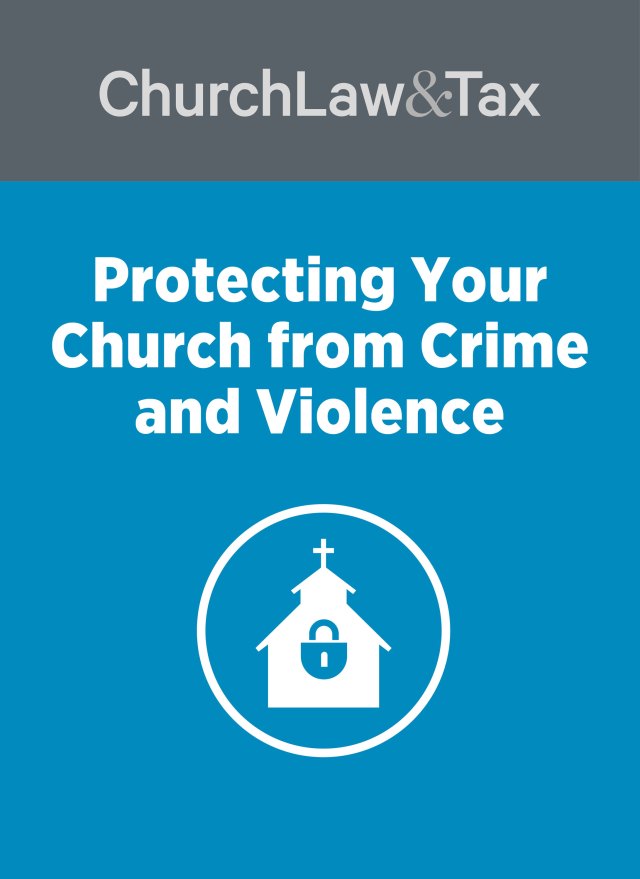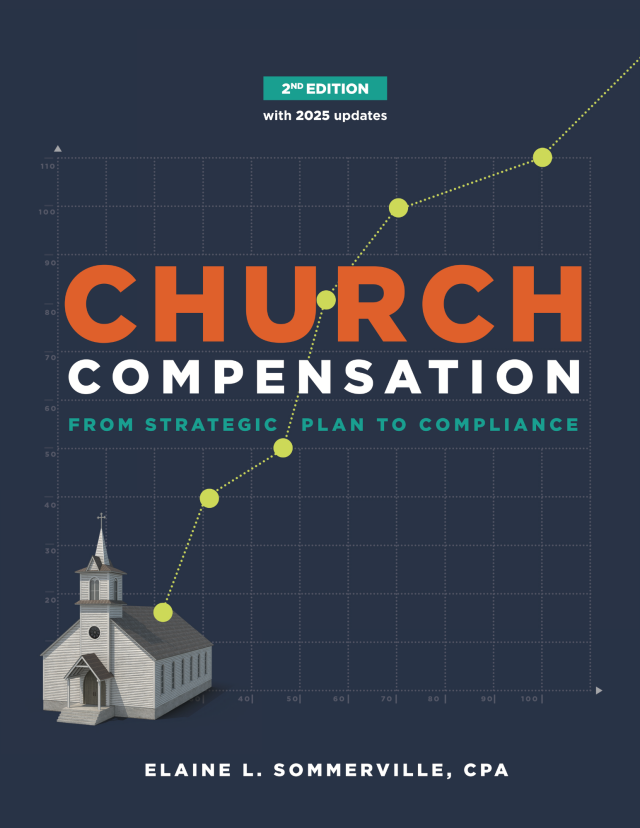Twenty years ago I started my career as a church business administrator and facilities director in Phoenix.
Back then, the need for incorporating a comprehensive safety and security team did not exist.
Times have changed, and the idea that churches are off-limits to violence has disappeared. Today, churches have even become targets of violence.
From the start, I needed a process to help me build a safety and security team.
The process had to be relaxed but effective, and easy to implement and manage. It needed defined steps to build a volunteer force that would sustain and replicate itself. It had to be organic in nature. Most importantly, it had to provide fulfillment to the individuals giving their time and energy to make it a success.
Over time, the process evolved into a five-step progression:
- Identify
- Recruit
- Train
- Deploy
- Manage
You can use this model to build any volunteer security and safety organization. Let me briefly explain how each of these steps functions.
Identify
It all begins with identifying who you want involved in your ministry.
Make a list of the attributes you want in the individuals you recruit for the safety and security team. Some general characteristics might include:
- Strong people skills
- Mental and emotional stability
- Keen ability to observe people and situations
- Good judgment and not impulsive
Recruit with care
In building a safety and security team, I also believe it’s important to look for people with professional law enforcement backgrounds, retired or active. Your first step here is to identify potential leaders that have a lifetime of experience and leadership qualities. Retired professionals will have time and ample experience, not to mention connections with local law enforcement agencies, which can help you identify other potential recruits for your team and help you build a solid safety and security ministry.
When considering “civilians” for this ministry, I encourage you to recruit with care. These days when concealed carry permits are easily obtained, inexperienced gun carriers generally do not have the proper skills to react in stressful situations. Therefore, many of them may not be the best choices for a safety and security team.
State and local governments often regulate private security, including church security teams, so work with them as you build your team. Only members of your safety and security team should be allowed to carry weapons at church. Permitting others outside your team to carry a concealed weapon will create a number of legal and liability issues that can become detrimental to the church.
Regardless of whom you select for your team, carefully think through whom you will and won’t allow to carry a weapon. This also is one of the reasons why I recommend that you staff your team with law enforcement professionals who attend your church. Your background screening process, which I will outline later, also may help you to identify the best team members to carry weapons.
For the safety side of your team, look for emergency medical technicians, registered nurses, and doctors. Equip them with medical supplies or “go-bags,” as such supplies are referred to in this field. Ask them to sit with their families in the same location in the church where they would normally sit, even when they are on duty with your team.
Recruit
Now that you identified potential participants for your safety and security team, the next step is “the ask.” Here, tact is everything. You are approaching potential volunteers because you believe they are right for this volunteer position.
Never ask on the fly. Never approach a prospective team member as if to grab him or her just to have someone to fill a position. Never beg. Approach any prospective volunteers like you would if you were inviting a trusted colleague to dinner.
Make sufficient time to meet face-to-face to lay out exactly what you are recruiting for. Talk about everything in this volunteer position—the ups and the downs. Don’t oversell; don’t promise; don’t glorify.
Above all, don’t use the God trump card (God told me to ask you. God told me you should do this.) God can indeed reveal His intentions about someone to you and if that is the case, there should be no need for you to do any name-dropping. Most likely, God has prepared your prospect’s heart in advance of your meeting.
And finally, make sure your prospective volunteer knows that an application process involving a criminal background check is required. Law enforcement professions will especially understand the value of screenings. Whether you’re recruiting a professional or a civilian volunteer, you should relay the benefits of screenings and the protection they provide for the church, volunteers, and ministry participants.
Your screening process should include the following:
- An application with questions that identify potential traits or tendencies indicating that the applicant might be a bad fit for the security team.
- Reference checks with at least two prior ministries or employers.
- A thorough criminal history check.
- A doctor’s statement indicating the applicant’s physical and mental fitness to serve on the team.
Train
Nothing damages volunteers’ enthusiasm more than throwing them into the job mix without proper training and orientation. In a potentially dangerous ministry like safety and security, policy and procedural guidelines play a big part in the training process.
Generally, safety and security training involves both individual and group activities. You will need to explain your church’s policy and guidelines for dealing with different types of security needs—domestic violence vs. teenage pranks, for example.
Define the use of force in detail—intricate detail—identifying the level of force needed for various situations. This is a “red flag” issue. Discuss weapons and which members of the team are permitted to carry a concealed weapon. Do not undervalue the importance of this discussion and the necessity for your team volunteers to understand your church’s policy regarding weapons and their use.
Safety and security training should be ongoing, scheduled, and completed at regular intervals. Attendance should be mandatory—no exceptions.
In this article, I have only scratched the surface of what has to be in place before a recruit completes training and is prepared to proceed to the deployment stage. Policies, procedures, and who is responsible for what in the safety and security ministry should be the foundation of all your training activities.
Deploy
This step deploys your new volunteer to his or her area of responsibility. On this first deployment, it’s important to check in at regular intervals and see how your new volunteer is doing.
Over time, you also should rotate all your volunteers into each of the positions your safety and security ministry oversees. Every volunteer should have an opportunity to become familiar with all areas of the ministry, to the point that they can be called upon to function in any area if necessary. Flexibility is an important element of an effective safety and security ministry.
Manage
In my mind, this is the most important step in the process. It’s in managing the ministry that you will not only be able to help your volunteers take on safety and security as more than an important job in the church, but also help them see it as a personal ministry.
If you are doing your job well, you also will come to know them in a way that puts you in the position of a spiritual mentor. This is your opportunity to build a deeper relationship beyond the weekend experience. Let them know you care about them and their family and that you are there to help and support them in their time of need.
As ministry managers, we often make the mistake of letting our volunteers’ excitement about their ministry get the best of them by their desire to volunteer to serve every weekend for all services and extra events during the week. Before long, that excitement turns to burnout, fatigue, discouragement, and more importantly, spiritual exhaustion. It’s good for people to be excited about serving the church, but often that translates in going full throttle and giving loads of time serving at the expense of family and good health.
To prevent this situation, your leadership will be critical. Be proactive in establishing a serving schedule that intentionally gives volunteers time off with their family. I prefer an every-other-weekend schedule and certainly one that schedules them for no more than three weekends in a month. Allow no exceptions to the schedule you develop. We all need time away for spiritual refreshment and time to relax. The result is likely to be long-term service and volunteers who are refreshed and ready to serve.
Finally, how does a safety and security ministry become self-sustaining?
Revisiting ‘Identify’
Let’s look again at Identify—the first step in the process. As you deploy your new recruits, you will see those that aspire to be leaders. It will be natural for them. Identify that quality and exploit it.
Through those who become the natural leaders on your team, you will be able to replicate this process and reach a point of having volunteers leading volunteers. The only way you can ever grow a volunteer ministry to meet the needs of your church is to give away the leadership. Don’t be clingy. And don’t worry about who gets the credit for building a successful safety and security ministry. Set the path to success and let others pick up on your lead.





